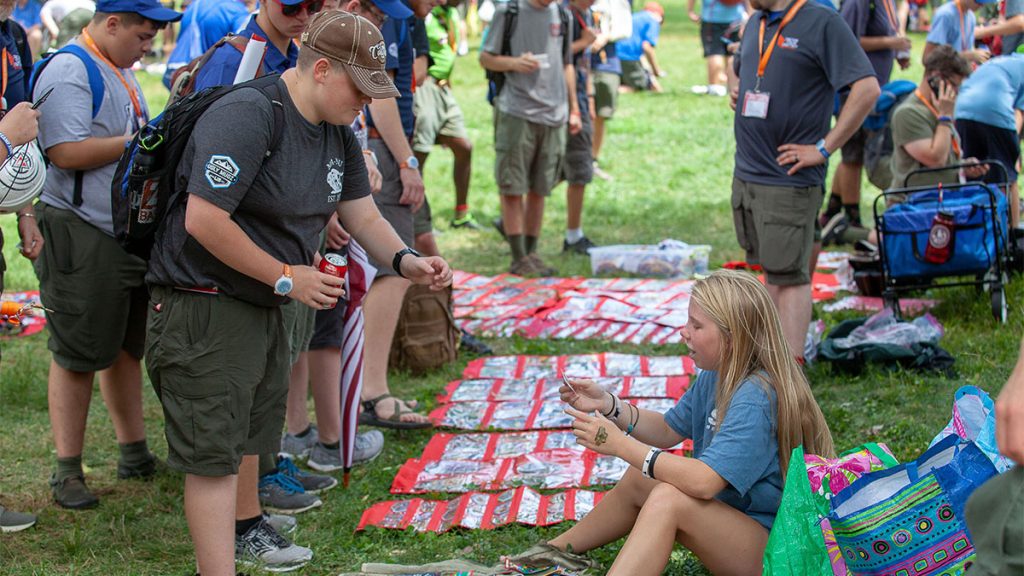The story of patch trading does not begin at NOAC, nor does it begin at the modern event patch or even the development of lodge flaps. Trading at Scouting events began at the conception of the Scouting movement itself. In the beginning, Scouts from across the country and around the world traded various articles of their uniforms and mementos from home. Notable items include shark teeth, redwood bark, and neckerchiefs. Trades were common at National Jamborees, World Jamborees, NOACs, and regional events.
Patch trading was specifically popularized at the first Grand Lodge Meetings of the Order of the Arrow as noted in the minutes of these annual meetings. The Order of the Arrow gave patch trading its momentum. The members of the OA were more likely to stay involved in the Scouting movement for a longer period of time as compared to Scouts not in the OA, thus the patch collections of these members became far more expansive. The involvement of OA members in NOACs and National Jamborees expanded the trading networks both in the OA and in the wider Scouting Organization. Trading OA patches at National Jamborees became a fantastic way to market the benefits of the honor society to Scouts that knew little of what the OA represented and stood for.
In the years since patch trading has expanded far beyond the metal insignia pins of yesteryear. In 1952, Dwight W. Bischel published the Wabaningo Lodge Emblem Handbook, which provided records of all the lodges, their information, and their current lodge flaps. This would be the first time Arrowmen would have access to this information and it created a boom of patch trading across the country. Over the years, lodge flaps became one of the more sought-after items for collectors, giving rise to patch numbers and more. The rise of online resale sites like eBay has made a culture of patch trading stronger than ever. Patch trading not only ties our bonds of brotherhood ever closer but also to the Arrowmen that came before us.
If you’re looking to do serious patch trading at the conference, you can get together with a buddy (the Buddy System is always a good idea) and set up at a trading station just about anywhere outdoors at the University of Tennessee, Knoxville. Find a nice spot off the sidewalks and walkways where there is plenty of foot traffic between NOAC venues, maybe spread out a blanket so you can show off your collections, and get ready to start looking at patches. You’ll see all kinds of patches this way. From lodge flaps to two-patch sets, to patch sets that surround the center “back-patch,” to photo-realistic patches. Find a safe, well-traveled location and get ready to meet Arrowmen from around the nation.
